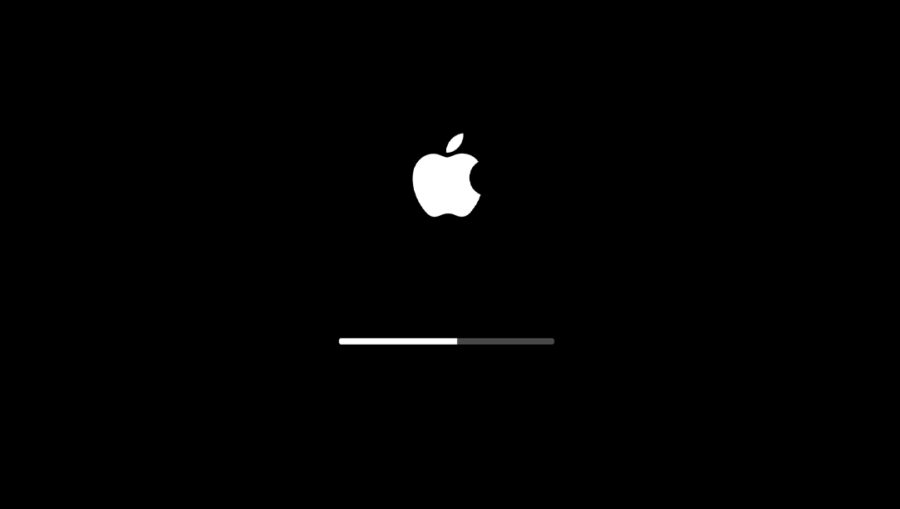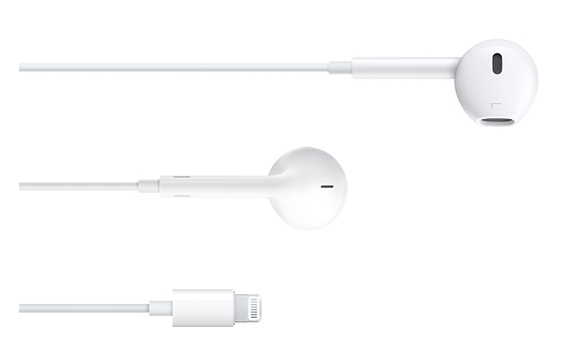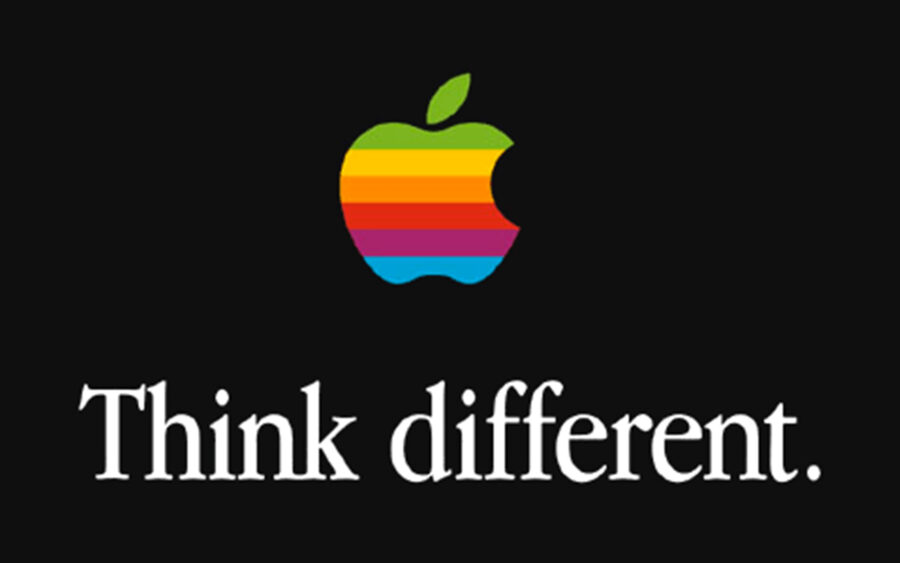Apple News: EarPods Will No Longer Ship Free With iPhones
Apple has been a source of innovation since the mid-70s. So what's next for Apple?
This article is more than 2 years old

Apple has been a source of innovation since the mid-70s. Whether it was the byproduct of competition or simply the desire to strive for technology greatness, the company has always been at the forefront of technology. So what’s next for Apple?
These are Apple’s plans for the future.
The End Of EarPods

Analysts are predicting that Apple will stop shipping free EarPods with its iPhones as part of a larger plan to phase out their iconic wired headphones entirely. They’ll stop shipping them starting with the iPhone 12.
At this point the technology of Apple’s bluetooth AirPods is so good that you really don’t need the wired version anymore. The AirPods are a superior experience and it’s really what anyone and everyone can and should be using to listen to their iPhone… if they can afford it. And there’s the problem.
AirPods, even the cheapest ones, are still more than $130. And people used to get EarPods for free. By phasing out AirPods Apple is quietly increasing the price of an iPhone by $130, without actually increasing the stick price. Because that’s how much it’s going to cost you to get the full functionality out of their device going forward.
Apple TV+

Apple is pushing hard to get into the content game with their new streaming service Apple TV+. Unlike their past efforts at pushing streaming content, Apple TV+ is available on non-Apple devices.
They’ve gotten some big name talent, but probably none bigger than Chris Evans. Evans is slated to appear in an Apple TV+ exclusive limited series called Defending Jacob. Along with Knives Out, it’s one of his first major works since finishing his run as Captain America with Marvel.
Here’s the first trailer for Defending Jacob, to give you an idea of what Apple TV+ is up to…
Your Future Home Will Hear Your Heartbeat
Apple recently published a patent for a system that would detect all home devices and coordinate them for your working pleasure. The patent is called Object Tracking And Authentication Using Modular Wall Units and while the title is a mouthful, the details of the patent are even more lengthy.
In a nutshell, though, Apple wants to create a smart home that can sense and work with other smart home devices, inanimate objects and even has the ability to determine different users. How would Apple pull off this feat? By reading a human’s unique heartbeat pattern.
This new technology would be able to tell if the human lived there or not. Technically speaking, the patent described this potential ability, “For instance, a 60 GHz millimeter wave sensor (MWS) system (or MWS system operating at another frequency) may be used to scan a person’s heart rate. In some cases, respiration rate can also be measured with this technique, and can be used to help differentiate users,” per the patent.
Another possibility with this new technology is the use of host units. These units would be placed around the home to be recognized by this tech and it would then be able to auto-generate a floor plan. It could detect inanimate objects, such as a chair or sofa, and also know when you are walking around the home.
The patent also details a scenario where the system identifies if you are an “authenticated” user which gives those different levels of access of functions around the home, depending on who they are. Is this a system that would interest you? While it is only in the patent stage, technology is bringing us closer and closer to reality.
Get A Genius In Your House

One of the worst things about owning any Apple product is that if something goes wrong, and I mean really goes wrong, you pretty much have to go to an Apple store. An unlike a Verizon store or an AT&T store, there isn’t one on every corner. Apple stores are few and far between, and if you aren’t near a major city, there may not be one in your vicinity at all.
Apple aims to fix that by having Apple Geniuses start coming to your house.
Apple is now listing on-site repair services as an option for repair work on some of their devices. You can schedule a repair call with Apple directly through the Apple Support page.
Currently the on-site repair service even more limited than the already limited availability of Apple stores. To try it you’ll need to live in New York, Los Angeles, San Francisco, Houston, Dallas, or Chicago. So it’s not really a help to people living in areas farther away from Apple stores… at least not yet. But they’re just getting started. If this test goes well, expect to see on-site repair services available in more areas in the future.
2020 iPad Pro
The last time we saw an iPad Pro was in 2018. Apple decided to skip a year with its iPad Pro release and one year in “tech time” can mean a whole lot of advancement. Unfortunately, not much can be confirmed with the new iPad Pros but there is a lot of speculation and rumor, some may end up on the cutting room floor and then again, some of it may not.
One thought is that the new iPad will come in two sizes as their 2018 models did. So this would not be a new thing for Apple, but for customers who try to find any way they can to pay less for an Apple product, this could be good news.
Another rumor comes via a leaked picture of the new iPad which shows three cameras on the back of the unit. This would represent a huge upgrade for the iPad Pro as they have all come with only one camera in the past. The other big news concerning the three cameras is that the iPad Pro may have 3-D capabilities. One of the cameras is a 3-D sensor, allowing the iPad to capture in 3-D where they can then be edited with an Apple pencil.
The iPad Pro 2020 is expected out in the first quarter of 2020.
iPhone SE2
When one thinks of Apple, two words very rarely cross their minds. Those would be “low cost”. Yet if the rumors are true, Apple fans may see a new, LOW-COST iPhone before Easter. The iPhone SE2 is said to bear a strong resemblance to the iPhone 8. So, with the speculated lower price, how does that affect the phone itself? The model is smaller with a 4.7” display screen. Resolution is lower but that means better battery life. Another change rumored is that the rear camera could feature hardware stabilization and the front camera providing “Portrait Mode”.
The eye-catcher here, though, is the (again) rumored entry price of $399. Yes, for an Apple iPhone. The question remains: is a $399 price worth the seemingly drop in tech?
We asked our readers whether this lower priced option would convince them to buy an iPhone and this was their response…
iPhone 12
Just like clockwork, Apple will unveil its new iPhone 12 in September of 2020. While nothing has been confirmed, there has been plenty of chatter as to what the new iPhone is all about.
It is believed there are four models that will be offered to consumers. The models will come in 3 sizes: a 5.4”, a 6.7” and two 6.1” displays. The 6.7” and one of the 6.1” models will be the higher-end OLED devices with triple-lens cameras while the other 6.1” and 5.4” models will offer the dual camera lens set-up and be the lower-end, lesser priced iPhones. These models are expected to have a much different design than the previous iPhones with a metal frame similar to the iPhone 4. This means the design will go back to the flat steel frame the 4 was known for.
From a camera standpoint, it’s expected to have a TrueDepth camera system, meaning the notch in the front will be cut down. It is also expected to have the 3-D technology using a laser to calculate depth for 3-D purposes.
The new iPhones are also expected to come with 5G connectivity. While 5G is still very new, by the time Apple is expected to roll out the iPhone 12, they hope 5G connectivity will be much more widespread.
Apple Watch Series 6
Once again, like clockwork (pardon the pun), Apple is set to release its new Apple Watch Series 6. If past revelations remain true, then expect the Series 6 announcement right alongside the iPhone 12 in September 2020.
Not much is known about this upcoming release but expect it to improve on the popular Series 5 model with a faster performance chip. With previous models already being water-resistant, you can expect the Series 6 to offer better resistance, perhaps giving them the ability for some high-velocity water activities. It is also expected for Series 6 to have better wireless transmission giving the watch faster cellular and Wi-Fi speeds.
Apple TV
With Apple jumping into the streaming world it stands to reason that a new Apple TV device wouldn’t be far behind. While nothing is official yet, there seems to be one in the works with improvements over the last model they released in 2017.
In the past, Apple has released only one model of Apple TV. It has always been a small, black, square device. But with its competitors offering different sizes for different ways to connect, expect Apple TV to step out of their “box” and come up with a couple of different options.
Apple TV already uses Siri as a means to control the device, so expect Apple to make improvements on this feature. They may incorporate Apple’s HomePod smart speaker instead of having to speak into the remote control.
The new Apple TV may offer larger storage capacity for those who can’t watch their favorite shows immediately or prefer to binge over a weekend. Another potential positive for consumers is the possibility those two dreaded words Apple hates, “low cost”. Apple TV 4K is pricey, coming in at $179-199. Compared to its competitors, where you can usually see prices around $35, this is a steep price to pay. Apple could be looking at a price drop to get more hands on Apple TVs.
AirTags
Ever misplace items such as your car keys, your wallet, or perhaps your glasses? Apple has a solution for you and they are calling it AirTags. These AirTags are small, round tracking tiles that can be attached to your car keys or wallet or whatever item you seem to often misplace. In short, they are tracking devices. They are set up by Apple’s Find My app which can be used on your iPhone, iPad or Mac.
There is no price point for the AirTag but similar items retail from $25-35. There is also no release date for the tags.
MacBooks with Apple-made Chips
In the past, Apple has used Intel chips to run their MacBooks. In a significant change, the MacBook will be transitioning to a chip made by Apple. The reasoning here is so iPhones, iPads, and Macs can work seamlessly together in the future. Apple already designs A-series chips that are found in iPhones and iPads.
AR Smart Glasses
For the past decade or so, Apple has been working on its version of AR/VR headsets. Their purchase of various AR/VR companies suggests that they are serious about the virtual reality market. So while this project looks like it might be a go for a late 2020 release, there is another project that is very intriguing. AR Smart Glasses.
These glasses would allow the user to first synchronize with their iPhone and then be able to see emails, texts, maps and even play games. There are also plans for third-party apps, though what those would be are unknown right now.
Other companies are moving in the same direction with glasses-type tech, so the race is on. Rumor has it that the AR/VR headset may arrive in 2022 with the Smart Glasses in 2023.
Here’s an important question though: What happens when you’re wearing these glasses and you get a text…and you’re behind the wheel of a car? Talk about distracted driving.
Apple Car
Better known as Project Titan. It’s been no secret that Apple has been wanting to jump into the electric car business. But it may not be what it seems on the surface. Apple isn’t getting into the nuts and bolts of making an actual car but rather the technology behind it.
This seems to be the wave of the future for cars of the future; technology for autonomous driving. The plan, as CEO Tim Cook told Bloomberg, “We’re focusing on autonomous systems. It’s a core technology that we view as very important.” He also said that Apple’s research on this is “probably one of the most difficult AI projects to work on.” So while Apple may not actually be building the car, their involvement in future technology is happening.
As a side note to vehicle building, Apple is putting together a vehicle of sorts. They recently announced that they would be building driverless shuttles that take employees from their massive Apple Park campus to their head office at 1 Infinite Loop located about a mile down the road.
Innovation Mistakes
Not every Apple idea has is a good one. Sometimes their ideas end up costing them money. That’s the case with their decision to slow down older iPhones. Apple claims they only slow down the performance of old phones in order to increase battery life. Consumer groups claim it’s to make people buy new phones. Now Apple is getting fined for doing it
Apple has been fined 25 million Euros by France for slowing down old phones. The fine came as a result from complaints by a France’s competition and fraud watchdog DGCCRF. They say iPhone owners, “were not informed that installing iOS updates (10.2.1 and 11.2) could slow down their devices.” They add that Apple, “committed the crime of deceptive commercial practice by omission”
It’s that failure to inform consumers that caused the fine, more than the practice itself. So in addition to the fine, Apple must now display a notice on its French-language website for one month.
Apple continues to insist that they only slow down old phones to make their batteries last longer. They explain, “The effects of performance management on these newer models may be less noticeable due to their more advanced hardware and software design.”
TAKE A BITE OF THAT APPLE

The world (well, the U.S. at least) took their first bite of Apple in 1976 when Steve Jobs, Steve Wozniak, and Ronald Wayne founded the Apple Computer Company. In the first of a series of questionable decisions, Wayne sold his 10% share of the newly formed Apple back to Jobs and Wozniak for a mere $800. One year and a second questionable decision later, Wayne forfeited any future claim against the now legally incorporated Apple for $1,500.
While Wayne has stated he doesn’t have any regrets with his decisions, “What can I say? You make a decision based on your understanding of the circumstances, and you live with it,” he said. The rest as we all know is history.
Now the future looks promising for Apple. With technology rapidly advancing, Apple seems to be able to offer its customers fantastic updates to familiar products as well as excitement for what they may produce in the near future.












